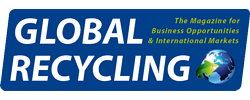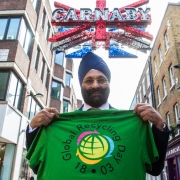Textiles: A “bumpy” Road towards Circularity
At the latest Textiles Division meeting held during BIR’s Convention 2024 in Copenhagen, experts delivered a progress report on the journey towards a circular value chain for textiles.
As reported by the Bureau of International Recycling (BIR), Cyndi Rhoades – founder of Worn Again Technologies and co-founder of World Circular Textiles Day – complained about the continuing predominance of a linear model for textiles based on virgin resources. Furthermore, she criticized that less than one percent is being recycled into new textiles. But she is convinced that “change is coming” and “technologies are on the way” to underpin the delivery of industrial-scale materials recycling. In that regard, the most important would be a move away from manual textile sorting to the development of automated sorting and pre-processing facilities (ATSP) capable of providing a low-cost, regional feedstock for fiber-to-fiber recycling. In the UK, the government had provided a grant of four million British Pound Sterling (around five million US-Dollar) for the development of an ATSP blueprint involving a consortium of 20 partners, she informed. The aim was for this facility to be up and running by the end of 2025.
According to guest speaker Maud Hardy, Managing Director of the textile industry’s eco-organization ReFashion in France, eco-modulated fees would play a major role in the 2023-2028 roadmap. Bonuses and penalties would be applied about durability, environmental certification and incorporation of recycled materials. As per Maud Hardy, the French government had also set the “huge” objectives of raising the collection rate in France from around 30 percent at present to 60 percent by 2028, and 80 percent recycling of non-reusable post-consumer textiles and footwear in 2027. Achieving these and other goals set out in the roadmap would require brands to invest some 1.2 billion Euro (around 1.3 billion US-Dollar).
Setback and progress
During a panel discussion moderated by Alan Wheeler of the UK’s Textile Recycling Association, reference was made to the company Renewcell, which established an industrial-scale textile-to-textile recycling facility in Sweden but had since filed for bankruptcy. According to BIR, Robert van de Kerkhoff, founder and CEO of PEPPER-i2/Impact & Inspire in Switzerland, said, “we know it’s going to be a bumpy road. Yes, failures will happen. We need to step back and learn from them.” Asked about the necessary ingredients for achieving circularity success, he identified the need for full transparency and ensuring a level playing field given that the EU had taken the legislative lead; the regulation requires inter alia compulsory separate collections of textiles by 2025. He also quoted an Euratex figure that up to 250 industrial projects would be required across Europe covering different types of fiber-to-fiber recycling.
According to BIR Textiles Division President Martin Böschen of TEXAID Textilverwertungs AG in Switzerland, current conditions for recyclers were “not so favorable” owing to low demand and falling prices. The short-term outlook remained “bumpy”, not least because of concerns over synchronizing the various components of a more circular industry. However the longer term offered the prospect of good progress on textiles circularity, he was quoted by BIR.
(Published in GLOBAL RECYCLING Magazine 2/2024, Page 32, Photo: TEXAID)







